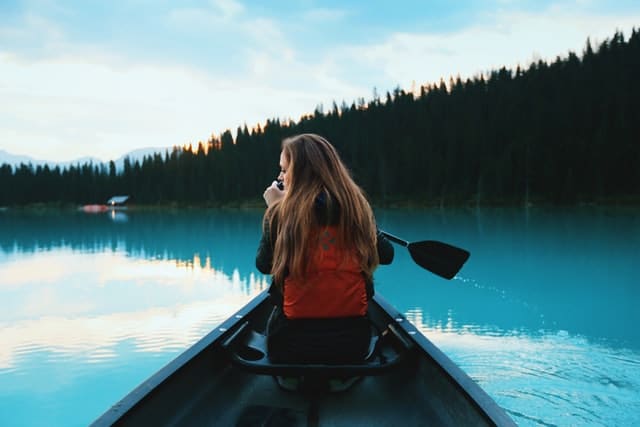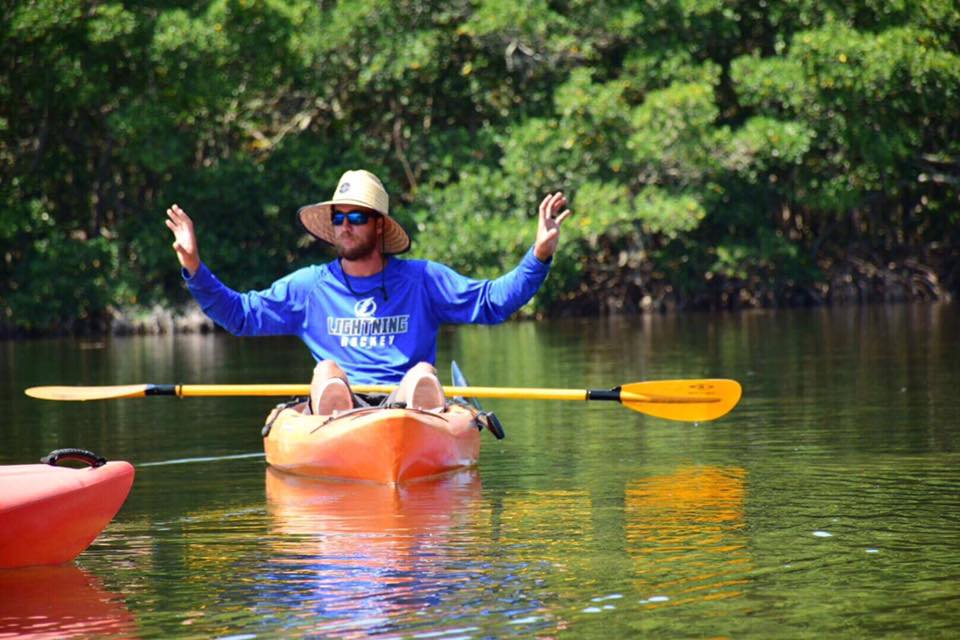I. Introduction to Canoeing Attire

A. Importance of Proper Clothing for Canoeing
Proper clothing for canoeing is essential for comfort, safety, and enjoyment on the water. It protects against environmental elements, provides insulation, and allows for freedom of movement.
B. Understanding the Impact of Weather and Water Conditions
Weather and water conditions can vary greatly while canoeing. The type of clothing worn should be appropriate for the current weather, water temperature, and potential exposure to sun, wind, rain, or cold.
C. Benefits of Wearing Suitable Attire for Comfort and Safety
Wearing suitable attire for canoeing ensures comfort and minimizes the risk of hypothermia, sunburn, or other discomforts. It also allows for unrestricted movement, which is crucial for paddling efficiently and maintaining balance in the canoe.
II. Clothing for Warm Weather Canoeing
A. Lightweight and Breathable Fabrics
- Exploring Options such as Nylon and Polyester
Nylon and polyester are popular choices for warm weather canoeing attire. These fabrics are lightweight, breathable, and quick-drying, allowing for sweat to evaporate and keeping the body cool.
- Identifying Benefits of Moisture-Wicking Materials
Moisture-wicking materials pull sweat away from the body, keeping it dry and preventing chafing or discomfort. Look for clothing with built-in moisture-wicking properties to stay comfortable during warm weather canoeing.
B. Quick-Drying Clothing

- Discovering Materials that Dry Fast for Comfort
Quick-drying clothing is crucial for warm weather canoeing, as it allows for rapid evaporation of moisture, keeping the body dry and comfortable. Look for garments made of synthetic fabrics or blends that dry quickly.
- Highlighting the Importance of Avoiding Cotton
Cotton clothing should be avoided for warm weather canoeing, as it retains moisture and takes a long time to dry. Wet cotton clothing can lead to discomfort, chafing, and even hypothermia in cooler conditions.
III. Clothing for Cold Weather Canoeing
A. Layering for Insulation and Warmth
- Understanding the Concept of Base, Mid, and Outer Layers
Layering is essential for cold weather canoeing to provide insulation and retain body heat. The base layer wicks away moisture, the mid-layer provides insulation, and the outer layer protects against wind and water.
- Identifying Suitable Materials for Each Layer
Base layers should be made of moisture-wicking materials, mid-layers should provide insulation (such as fleece or wool), and outer layers should be waterproof and windproof (such as a shell jacket).
B. Waterproof and Windproof Outerwear
- Exploring Options for Waterproof and Windproof Jackets
A waterproof and windproof jacket is crucial for cold weather canoeing to protect against rain, wind, and potential splashes. Look for jackets made with breathable materials to prevent overheating.
- Selecting Proper Bottoms for Cold Weather Canoeing
Choose bottoms that provide insulation and protection from the elements. Insulated pants or waterproof pants paired with thermal base layers can provide the necessary warmth and comfort.
IV. Footwear for Canoeing
A. Closed-Toe Shoes with Good Traction
- Exploring Options such as Water Shoes or Hiking Shoes
Closed-toe shoes with good traction are ideal for canoeing. Water shoes or hiking shoes offer protection, support, and grip on wet surfaces. Look for shoes specifically designed for water activities.
- Identifying Benefits of Non-Slip Soles for Stability
Non-slip soles provide better traction on wet surfaces, preventing slips and falls in the canoe or while navigating slippery riverbanks. Look for shoes with rubber or sticky rubber outsoles for optimal grip.
B. Avoiding Heavy or Bulky Footwear
- Understanding the Impact of Weight and Bulkiness on Performance
Heavy or bulky footwear can impede movement, affect balance, and increase the risk of accidents. Choose lightweight and flexible footwear that allows for natural movement and provides comfort throughout the canoeing trip.
- Highlighting the Importance of Comfort and Mobility
Comfort and mobility are crucial for successful canoeing. Ensure that footwear fits properly, provides sufficient support, and allows for easy movement of the feet and ankles.
V. Headgear and Eyewear for Canoeing

A. Sun Protection with a Hat or Cap
- Exploring Options for Wide-Brimmed Hats or Caps
Wide-brimmed hats or caps provide shade and protect the face, neck, and ears from the sun’s harmful rays. Look for hats with a UPF (Ultraviolet Protection Factor) rating for added sun protection.
- Identifying the Benefits of Sun Protection for Health and Comfort
Sun protection is vital during canoeing to prevent sunburn, heatstroke, and other heat-related illnesses. Wearing a hat or cap provides shade, reduces the risk of sunburn, and helps regulate body temperature.
B. Sunglasses with UV Protection
- Discovering the Importance of Protecting Eyes from Harmful UV Rays
Wearing sunglasses with UV protection is crucial for eye safety during canoeing. Prolonged exposure to UV rays can lead to eye damage and increase the risk of conditions such as cataracts or macular degeneration.
- Highlighting Benefits of Polarized Lenses for Glare Reduction
Polarized lenses reduce glare from the water’s surface, providing better visibility and reducing eye strain. They enhance visual clarity, enabling paddlers to see potential hazards or obstacles more clearly.
VI. Accessories and Extras for Canoeing
A. Sunscreen and Bug Repellent
- Exploring the Importance of Protecting Skin from Sunburn and Insect Bites
Sunscreen protects the skin from harmful UV rays, preventing sunburn and reducing the risk of skin cancer. Bug repellent helps keep mosquitoes, ticks, and other insects at bay, reducing the risk of bites or infections.
- Identifying Suitable Sunscreen and Bug Repellent Products
Choose sunscreen with a high SPF (Sun Protection Factor) and broad-spectrum protection. Select bug repellent that is effective against mosquitoes, ticks, and other insects commonly found in the area.
B. Personal Floatation Device (PFD) or Life Jacket
- Understanding the Necessity of Wearing a PFD for Safety
A personal floatation device (PFD) or life jacket is crucial for safety during canoeing. It provides buoyancy and helps keep the paddler afloat in case of an accident, especially in deep or turbulent waters.
- Ensuring Proper Fit and Compliance with Safety Regulations
Ensure that the PFD or life jacket fits properly and is in compliance with safety regulations. It should be snug, with adjustable straps, and approved by a recognized safety agency to ensure adequate flotation.
Wearing appropriate attire for canoeing is crucial for both comfort and safety on the water. Whether it’s warm or cold weather conditions, choosing lightweight, moisture-wicking fabrics and layering properly ensures comfort and temperature regulation. Proper footwear, headgear, and eyewear provide protection from potential hazards and elements. Additional accessories like sunscreen, bug repellent, and PFDs contribute to overall safety and well-being. By following guidelines for canoeing attire, paddlers can have an enjoyable and worry-free experience on the water.
